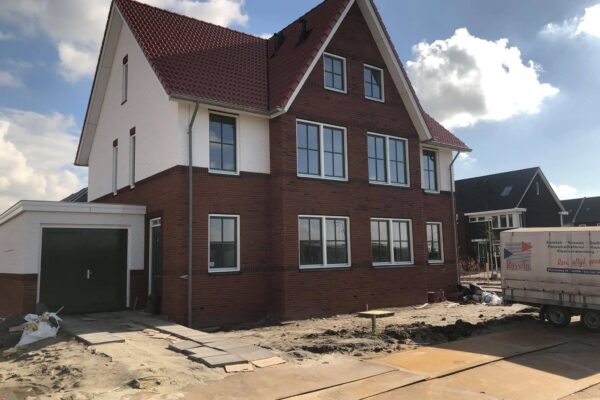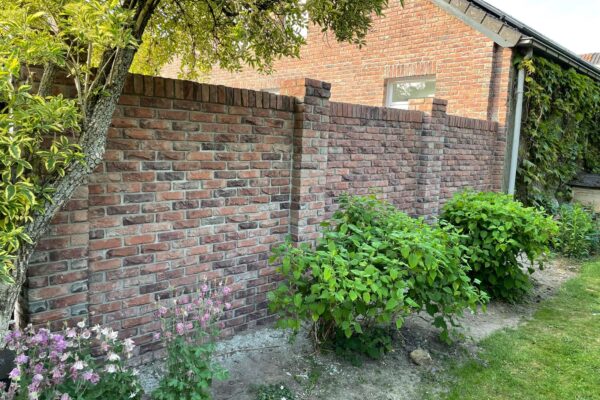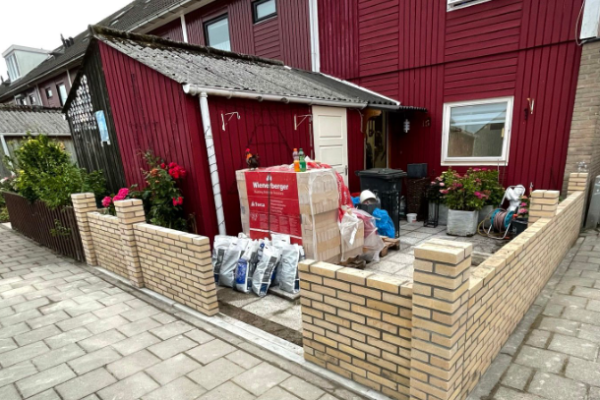
Dutch masonry
Dutch masonry is an important part of the construction art in the Netherlands. There are several types of masonry, such as clean masonry and rough masonry. Clean masonry, also known as facade masonry, is what is visible and consists of clean and high-quality bricks. Rough masonry is what is not visible and is usually laid less carefully.
Masonry is a technique where bricks or blocks are laid on top of each other using mortar or adhesive. It is important for the bricks to be laid in such a way that all the spaces between them are completely filled. For this, mortar or masonry mortar is used, which consists of sand, binder, and water. The binder is usually Portland cement or high furnace cement, sometimes mixed with lime.
For vertical wall masonry, a master mason uses masonry profiles. These are wooden or metal rods that are installed at corners or at the end of the wall. The master mason marks the layers on the profiles using a ruler for guidance, which allows for vertical masonry to begin.
It is important to know that humidity is a crucial factor in masonry. Bricks must have a certain level of moisture to not extract too much moisture from the mortar, allowing the curing process to occur.
To build a wall perpendicular using brickwork, a bricklayer uses brickwork profiles. These are usually wooden or sometimes aluminum rods that are precisely installed at corners or at the end of the wall, typically using a level. The bricklayer marks the layer on the profiles with a ruler. A “layer” consists of the thickness of the stone plus the thickness of the joint. Then, the bricklayer measures down from the reference level to start horizontally. Next, they draw a “line” from one profile to another, starting from the bottom layer.
Masonry tools
Tools are an essential part of a mason’s profession. The most commonly used tools for a Dutch mason are a template, joint spatula, hammer, chisel, leveling spatula, level, clamps, metal cord, pencil, folding ruler, and layer ruler.
A template is used for applying mortar to stones, while a hammer and chisel are used for fitting stones. The joint spatula is used for opening and cleaning joints, and also for smoothing the work evenly. The level is used for wall alignment, and clamps are used to secure profiles in place. The metal cord is used to maintain a straight wall line, while a pencil and folding ruler are used for measurements and markings.
In addition, other tools such as a mixer, mill, or silo are often used for thorough mixing of mortar. Electric tools such as a drill, angle grinder, or screwdriver are also commonly used in the masonry process.
It is important for masons to carefully maintain their tools in good condition and use high-quality tools to achieve efficient and professional results. Tools are an integral part of a mason’s profession and can determine the quality of the end result.
Metselverbanden Nederland
Masonry joints are the way bricks or blocks are laid in a wall. The most common masonry joints in the Netherlands are the half-brick joint and the raking joint. Other joints, also seen in the Netherlands, include the cross joint, Flemish joint, Norwegian joint, chain joint, and many others.
Half-brick joint: Each layer of bricks is shifted by half a brick (headers) relative to the layer below. Each vertical joint is located in the middle between the top and bottom bricks.
Raking joint: The mason starts the first layer with a three-quarter brick joint. On the next layer, they choose between a stretching or heading joint, and on the third layer, they start again with a three-quarter brick joint. The fourth layer starts with either a stretching or heading joint, and so on. Between the corners, the mason freely chooses the sequence of stretching or heading joints, as long as the heading or vertical joint does not continue to the next layer. The rule is never to lay more than 2 heading or 5 stretching joints in a row. In addition, inevitable steps (falling teeth) in the terminology of the profession may be visible on a maximum of 6-7 layers.



